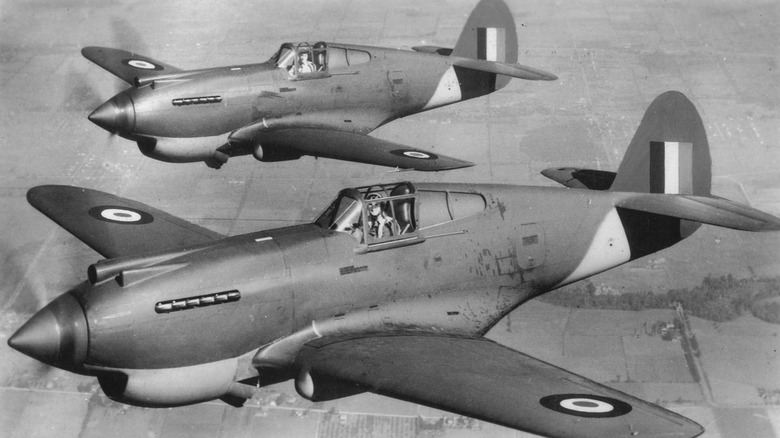How WWII Forced Philadelphia And Pittsburgh To Form The Steagles For The 1943 Football Season
When the National Football League (NFL) was founded in 1920, according to the league's website, many of the teams were headquartered in cities that, today, would be considered smaller locales that likely wouldn't be home to an NFL team. Smaller cities such as Muncie, Indiana, and Decatur, Illinois fielded teams that competed against those from bigger cities such as Buffalo, New York. Eventually, the league would expand and teams would move around; by 1933, according to the Pro Football Hall of Fame, the Pittsburgh Steelers (then known as the Pirates) and the Philadelphia Eagles had joined the NFL.
Today the two teams exist separated by several hundred miles, different fan bases, and different conferences within the NFL. Desperate times call for desperate measures, however, and for a time in 1943, the realities of World War II forced the two teams to combine and play a season as one team. To at least some fans, the combined team was known as "The Steagles."
1943 was hard on everyone
If you're familiar with the 1992 comedy-drama "A League Of Their Own," then you're doubtless aware that World War II drastically reduced the availability of men — in particular, young, healthy, physically-fit men, such as professional athletes — due to so many of them being brought into the war effort.
It wasn't limited to baseball, however — as the Philadelphia Eagles note on their website, young men from professional football were being drafted (or voluntarily joining) by the scores during this time. So depleted were the rosters of both the Eagles and the Steelers that, faced with the possibility of having to forfeit both of their seasons, the two teams decided to combine into one. For one and only one season, Pittsburgh and Philadelphia jointly fielded an NFL team, called "the Steagles," according to the Eagles' website, or alternately, "Phil-Pitt," according to the Pro Football Hall of Fame.
Fielding a Steagles combo team wasn't easy
The Steagles more-or-less split everything 50/50, according to the Eagles' website, including players from both rosters, both head coaches, and home games shared between Pittsburgh's Forbes Field and Philadelphia's Shibe Park.
It went about as well as could be expected. The two coaches could barely stand each other and spent most of their time arguing. "It was actually kind of funny to watch," said player Frank "Bucko" Kilroy. The players who managed to take the field were not exactly the cream of the crop; Eagles tackle Al Wistert, who was a rookie on the Phil-Pitt team, called himself and his colleagues "lousy players." And not only were they "lousy," they were exhausted: they were still required, by the federal government, to put in 40 hours per week at their day jobs supporting the war effort.
Despite the hurdles life put in their way, the Steagles actually managed to perform reasonably well on the field: according to the Pro Football Hall of Fame, they went 5-4 with one tie. That may sound mediocre at best, but for the Philadelphia side, it was their first winning season since their founding a decade earlier.


